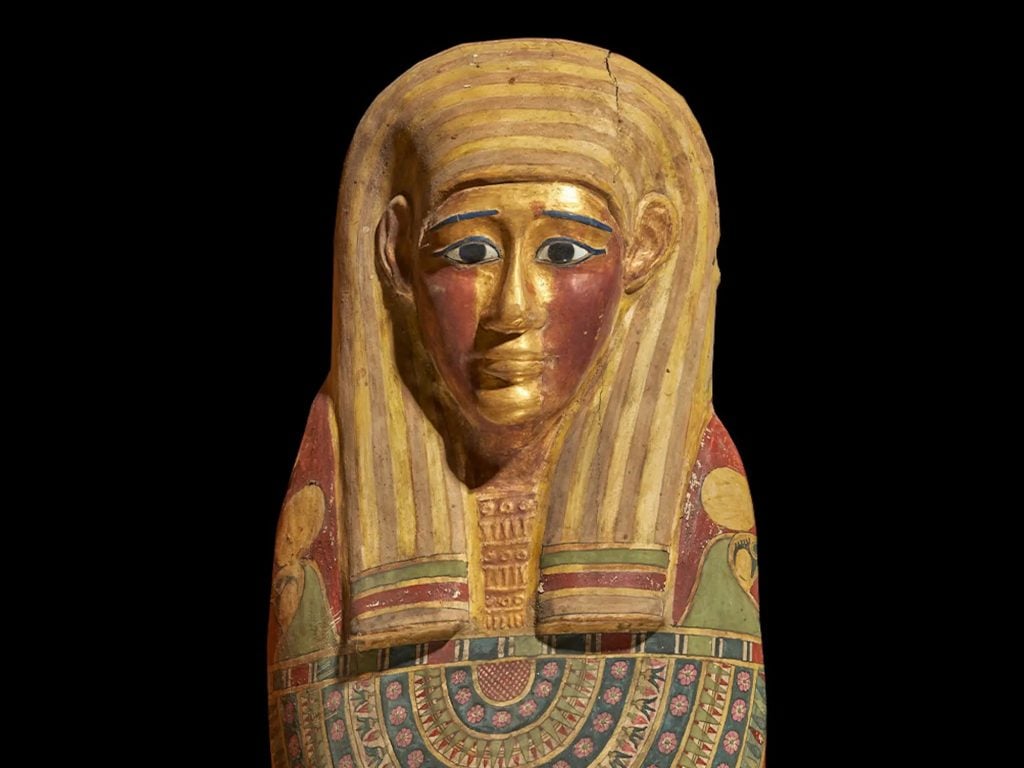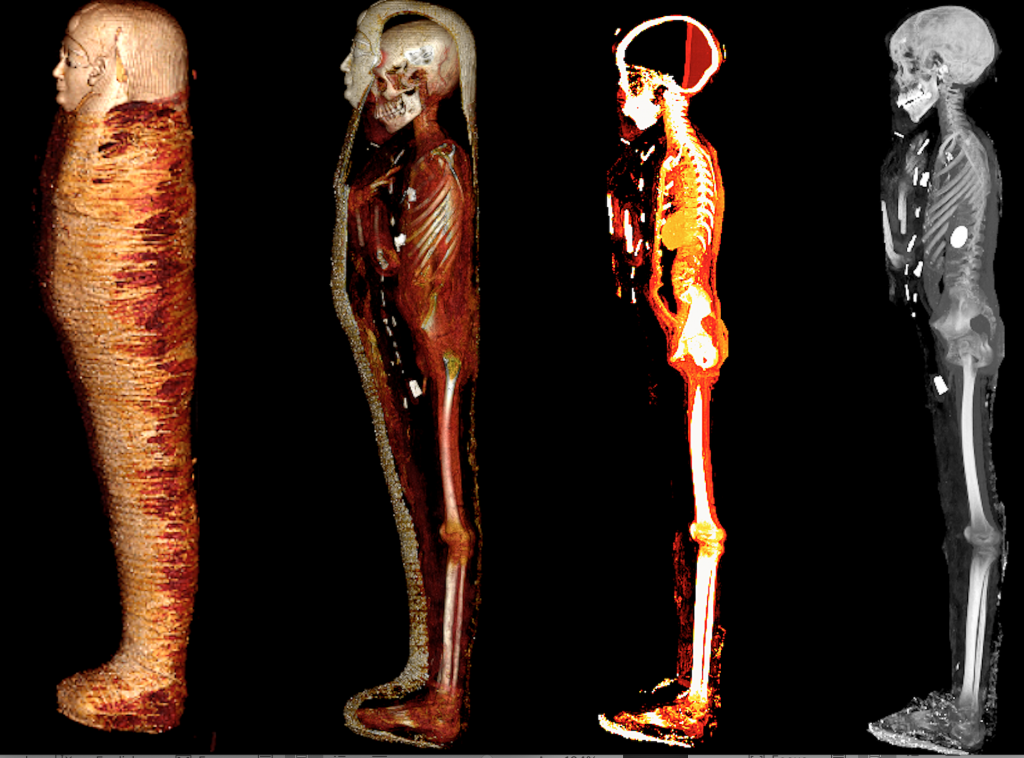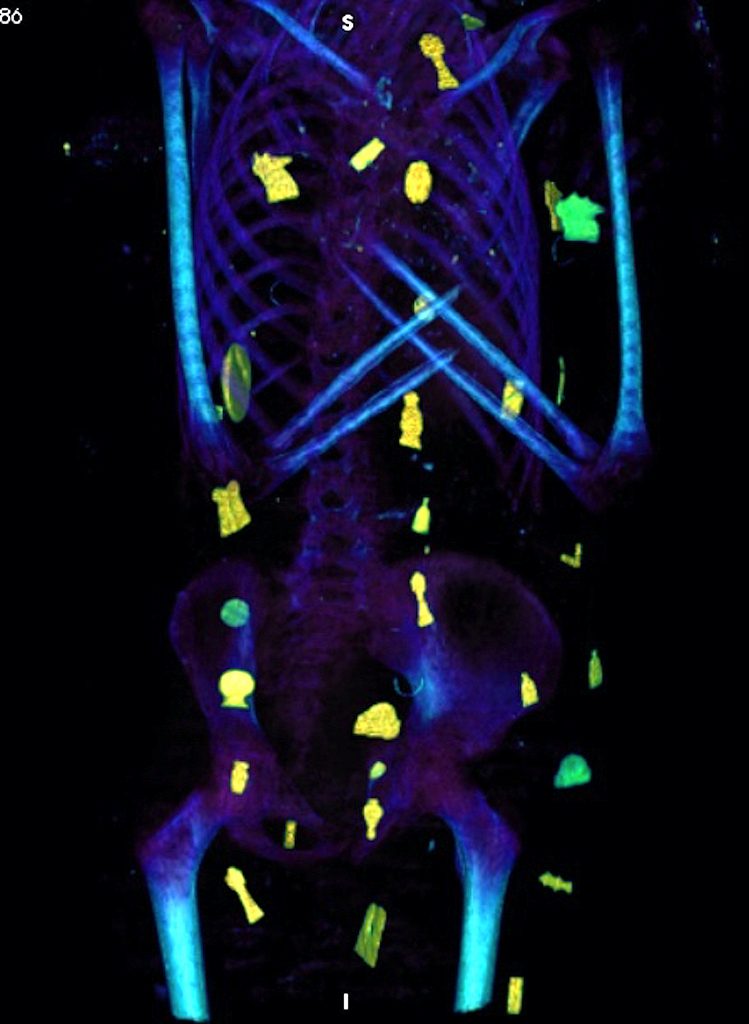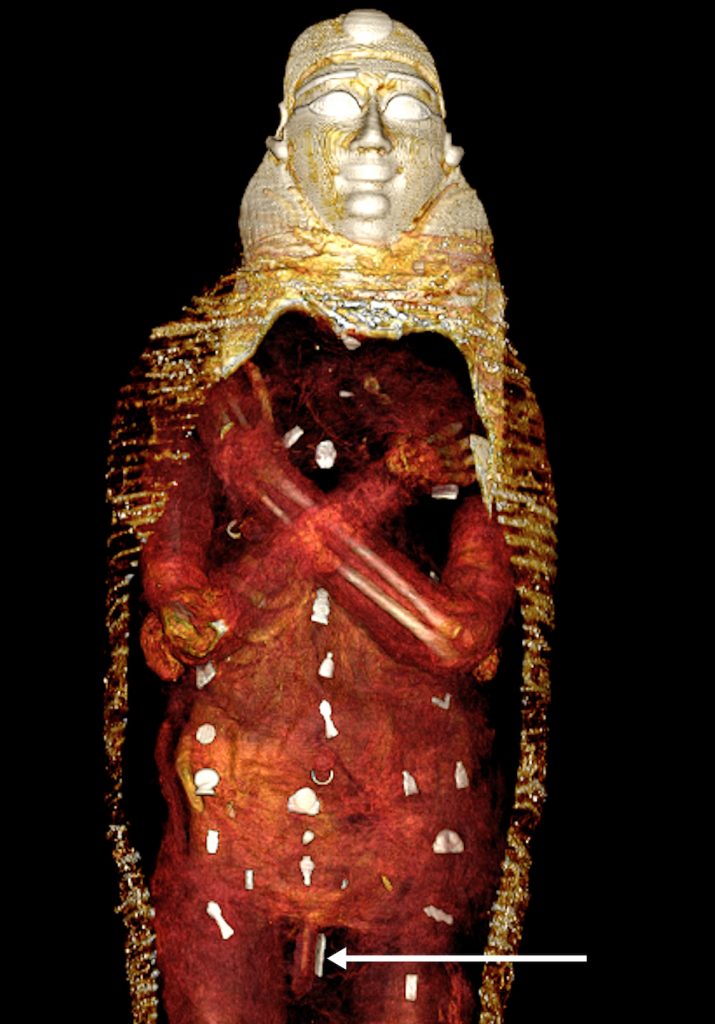Art & Tech
Researchers in Cairo Used CT Scans to ‘Digitally Unwrap’ a 2,300-Year-Old Mummy of a Teenager, Discovering 49 Gold Amulets
A scarab amulet, buried in the mummy's chest, has also been replicated with 3D printing.

A scarab amulet, buried in the mummy's chest, has also been replicated with 3D printing.

Artnet News

Using advanced technologies from computed tomology scanning to 3D printing, scientists in Cairo have managed to peer under the layers of a 2,300-year-old mummy of a teenage boy.
Dated to the Ptolemaic period (332–30 BCE), the mummy was excavated in 1916 from a cemetery in southern Egypt, and stowed away in the basement of the Egyptian Museum in Cairo, which, since 1835, has served as a repository for such finds. Wearing a gilded mask, the sarcophagus sat undisturbed for close to a century before Sahar Saleem, professor of radiology at Cairo University, decided to “digitally unwrap” the remains.
By CT-scanning the coffin, she found the identity of the mummy to be a 15-year-old boy, whose body underwent “a high-quality mummification process,” according to her study, published in Frontiers in Medicine. CT scans, for one, found that while the boy’s viscera were removed, his heart was preserved in his chest cavity as it represented a spiritual symbol.

A CT image of the Golden Boy mummy, showing four stages of its “digital unwrapping.” Photo: Sahar Saleem.
The teenager was also buried with 49 amulets, which were intricately arranged in three columns between the folds of the mummy’s wrappings. These artifacts were crafted out of gold and stone, and appeared in 21 different shapes, such as the eye of Horus and the knot of Isis. A two-finger amulet was found at the embalming incision (the opening from which the boy’s organs were removed), and a golden tongue-shaped amulet was placed inside the mummy’s mouth.
The fidelity of these CT scans was high enough that scientists were able to replicate a gold amulet, designed to resemble a scarab and found within the mummy’s chest cavity, which they 3D-printed in plastic.

A CT image of the Golden Boy mummy, showing three columns of amulets. Photo: Sahar Saleem.
For the ancient Egyptians, these talismans served to protect and guide the deceased into the afterlife. A pair of sandals found in the coffin would enable the boy to walk out of the tomb; the golden tongue allowed him to speak in the hereafter.
“Ancient Egyptians believed in the power of amulets, which depended on its material, color, and shape,” Saleem told Insider. “During mummification, the embalmers said prayers and recited verses from the Book of the Dead, while placing amulets inside the mummy or in between the wrappings.”

A CT image of the Golden Boy mummy, showing three columns of amulets. Photo: Sahar Saleem.
These non-invasive techniques have further allowed the researchers to approximate the boy’s face, deemed to be oval-shaped, with a small nose and narrow chin. While his cause of death remains unknown, the team, alongside archaeologists at the Egyptian Museum, have deduced from the healthy state of his remains and his lavish burial that he was of high socioeconomic status.
Following Saleem’s findings, the Egyptian Museum has moved the mummy, newly christened “The Mummy of the Golden Boy,” from storage to its main hall, where it is displayed alongside the CT images and 3D-printed amulet that offer fresh insight into his life and death.
More Trending Stories:
Researchers Used Facial Recognition Technology to Identify a Long-Lost Painting by Raphael
Oops! A Swiss Museum Has Lost Two Old Masters Paintings That It Sent for Cleaning
Paleontologists in India Have Hit on an Epic Find: Hundreds of Bowling Ball-Sized Titanosaur Eggs